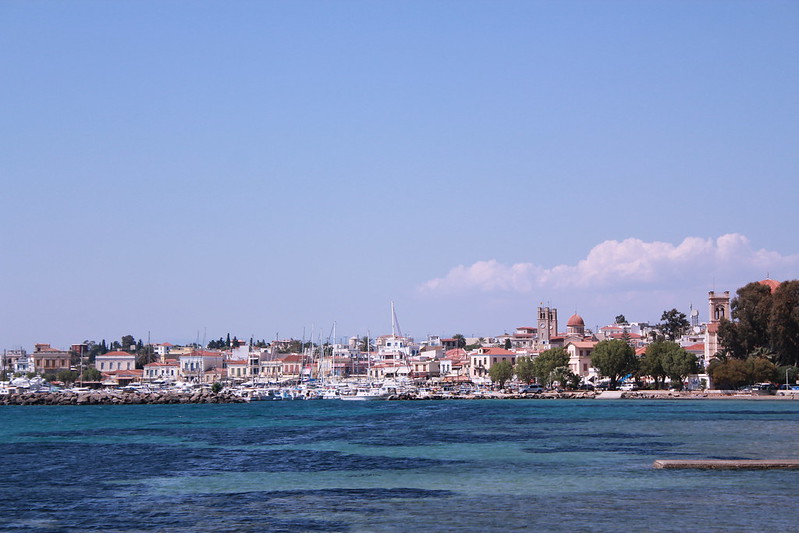The Saronic Island group is a cluster of islands located in the Saronic Gulf of the Aegean Sea in Greece. The group is made up of seven main islands and several smaller ones. Each island is unique and offers its own charm and beauty.
In this article, we will list all of the islands in the Saronic Island group and briefly describe each one.
- Aegina: Aegina is the largest island in the Saronic group and is located about 17 miles (27 km) south of Athens. It is famous for its stunning beaches, ancient temples, and colorful harbor. Aegina is a popular day trip destination from Athens, but it is also a great place to spend a few days.
- Agistri: Agistri is a small, charming island located just a short ferry ride from Aegina. It is known for its crystal-clear waters, sandy beaches, and lush vegetation. Agistri is a popular destination for nature lovers and those looking for a peaceful retreat.
- Hydra: Hydra is one of the most picturesque islands in the Saronic group. It is famous for its beautiful harbor, narrow streets, and traditional stone houses. Cars and motorbikes are not allowed on the island, which adds to its charm. Visitors can explore the island on foot, by donkey, or by water taxi.
- Poros: Poros is a small, lush island located just a short ferry ride from Athens. It is known for its beautiful beaches, pine forests, and quaint villages. Poros is a great place to relax and soak up the Greek island vibe.
- Salamis: Salamis is the closest island to Athens and is known for its rich history. It is believed to be the site of the famous Battle of Salamis, which took place in 480 BC. Visitors can explore ancient ruins, beautiful beaches, and quaint villages on the island.
- Spetses: Spetses is a beautiful island located just a few miles south of Hydra. It is known for its stunning beaches, crystal-clear waters, and charming town. Spetses is a popular destination for sailing and yachting enthusiasts.
- Dokos: Dokos is a small, uninhabited island located just south of Hydra. It is known for its pristine beaches, crystal-clear waters, and stunning natural beauty. Visitors can explore the island on foot or by boat.
In addition to these seven main islands, the Saronic group also includes several smaller islands, including Moni, which is located just off the coast of Aegina and is known for its beautiful beaches and crystal-clear waters.
They have a rich and fascinating history, dating back thousands of years. In this article, we will provide a timeline of the history of the Saronic Islands, from their early beginnings to the present day.
Prehistoric Times (Neolithic Era – 3000 BCE) The Saronic Islands were inhabited as early as the Neolithic era. Archaeological evidence suggests that people lived on these islands and engaged in agriculture, fishing, and trade. The islands were also important for their strategic location, providing a safe harbor and protection from storms.
Mycenaean Period (1600 BCE – 1100 BCE) The Mycenaean civilization emerged in Greece during the late Bronze Age. The Saronic Islands were part of this civilization and were used as a trading hub for the Mycenaeans. The islands were also important for their strategic location, providing a base for the Mycenaean navy.
Classical Period (5th Century BCE – 4th Century BCE) During the Classical period, the Saronic Islands were part of the Athenian Empire. The islands were important for their natural resources, including timber, wine, and olives. They were also strategically located, providing a naval base for the Athenian navy. The islands played a key role in the Peloponnesian War, with the Athenians using them as a base to launch attacks on the Peloponnesian Peninsula.
Roman and Byzantine Period (1st Century BCE – 14th Century CE) The Saronic Islands became part of the Roman Empire in 27 BCE. The islands continued to be important for their natural resources and strategic location. During the Byzantine period, the islands were an important center of trade and commerce. They were also used as a base for the Byzantine navy.
Venetian and Ottoman Period (14th Century CE – 1821 CE) During the Venetian period, the Saronic Islands were part of the Venetian Republic. The islands were an important center of trade and commerce, with Venice using them as a base for its fleet. During the Ottoman period, the islands were part of the Ottoman Empire. The islands continued to be important for their natural resources, and they were also used as a base for the Ottoman navy.
Modern Period (1821 CE – Present) The Saronic Islands played a key role in the Greek War of Independence, which began in 1821. The islands were liberated from Ottoman rule in 1828, and they became part of the newly independent Greek state. During the 20th century, the islands experienced significant economic growth and development. Today, the islands are a popular tourist destination, known for their natural beauty, rich history, and cultural heritage.
In conclusion, the Saronic Islands have a long and fascinating history, dating back thousands of years. They have played a key role in Greek history, serving as a strategic location for trade, commerce, and naval operations. Today, they are a popular tourist destination, offering visitors a unique blend of natural beauty, rich history, and cultural heritage.
Overall, the Saronic Island group offers something for everyone. Whether you are looking for ancient history, natural beauty, or simply a peaceful retreat, you are sure to find it on one of these beautiful islands.

